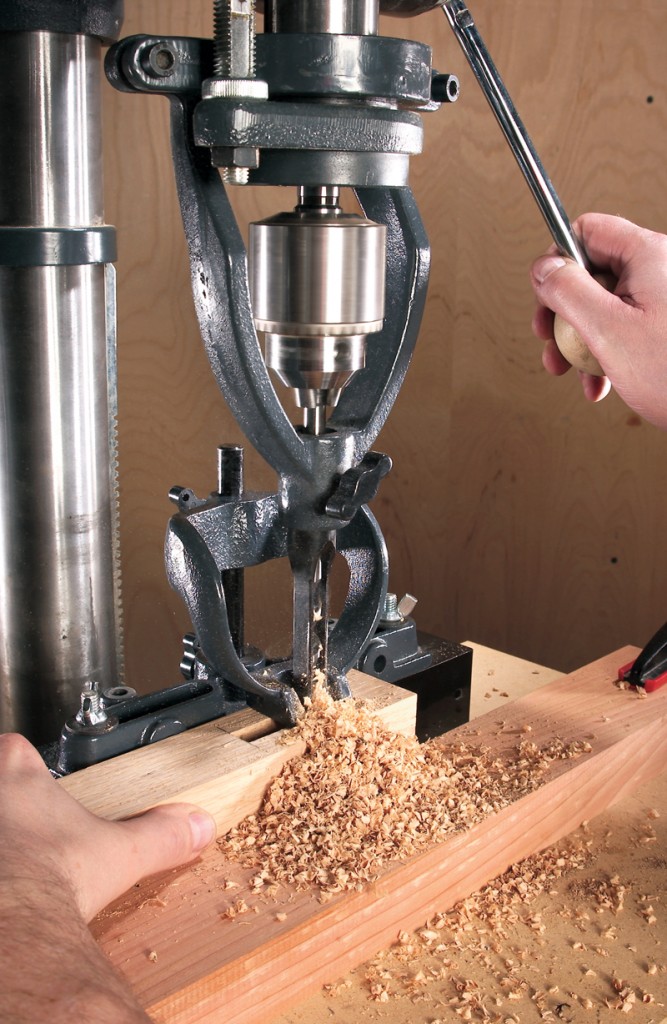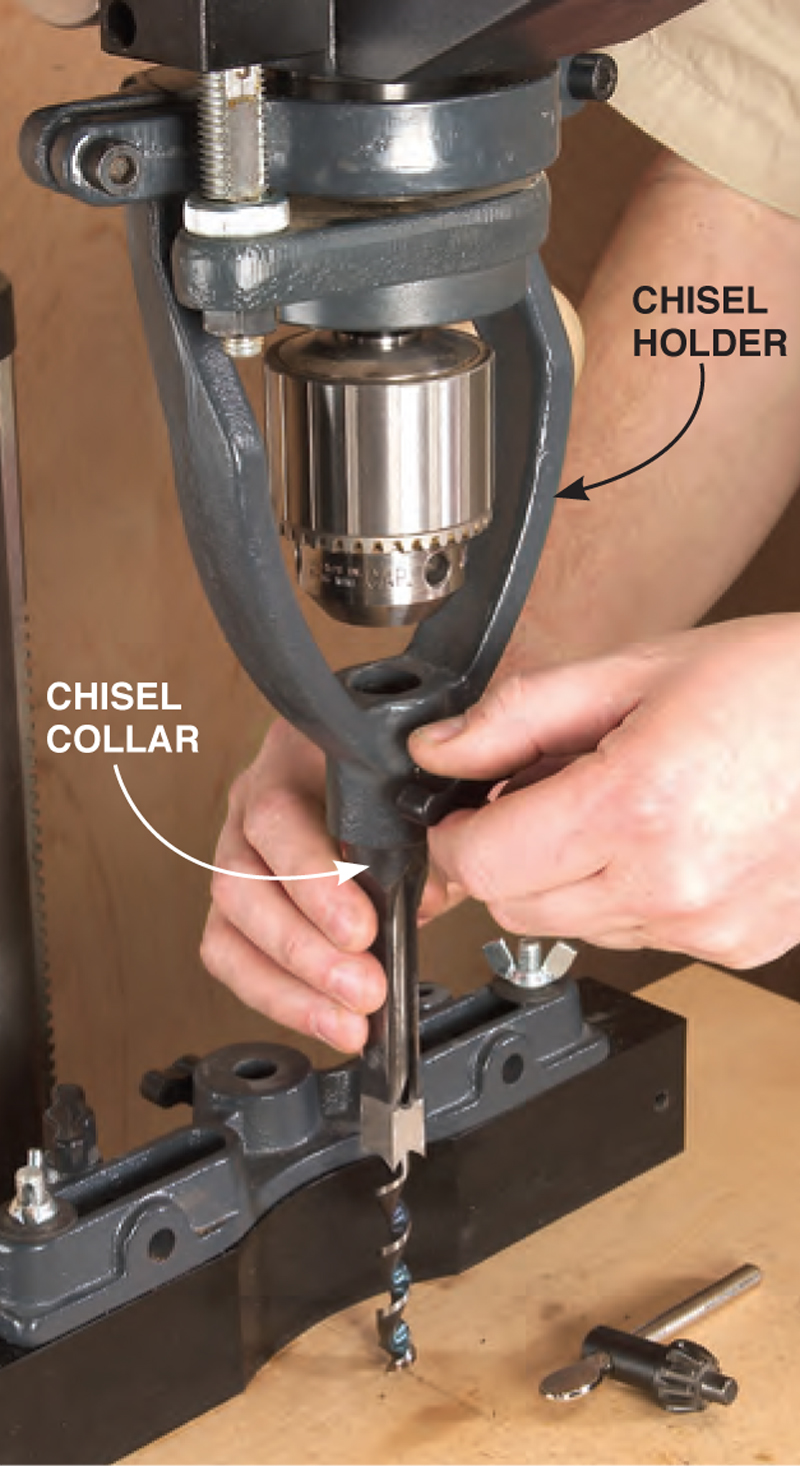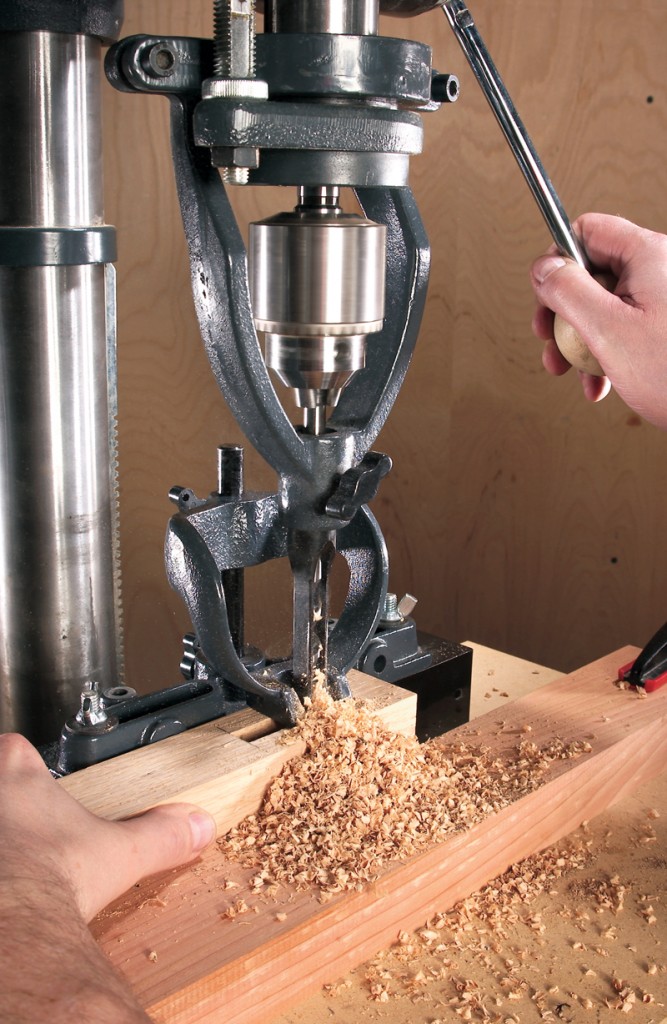Are you curious about whether you can use a mortise chisel in a drill press? Well, the answer might surprise you! In this article, we’re going to dive into this woodworking topic and explore whether it’s a feasible option. So, if you’re a budding woodworker or simply someone intrigued by power tools, keep on reading!
Have you ever wondered if a mortise chisel, that handy tool for creating rectangular recesses in wood, can be used with a drill press? It’s a fascinating question that many woodworking enthusiasts ponder. Well, let’s get down to it and find out whether it’s a match made in heaven or a recipe for disaster!
Woodworking can be a lot of fun, and using different tools is like unleashing your creativity. But when it comes to using a mortise chisel in a drill press, things can get a little tricky. So, let’s roll up our sleeves, grab our safety goggles, and take a closer look at this intriguing topic!
While it is technically possible to use a mortise chisel in a drill press, it is not recommended. The drill press is designed for drilling holes, not for chiseling or mortising operations. Using a chisel in a drill press can be dangerous and may damage both the chisel and the drill press. It’s best to use a mortising machine or a specialized mortising attachment for your drill press to ensure safe and accurate mortising operations.

Can You Use a Mortise Chisel in a Drill Press? Exploring the Possibilities
When it comes to woodworking, having the right tools can make all the difference. One tool that often comes up in discussions is the mortise chisel. Known for its ability to create clean and precise mortise joints, many woodworking enthusiasts wonder if they can use a mortise chisel in a drill press. In this article, we will explore the possibilities and provide you with all the information you need to know.
Understanding the Functions of a Mortise Chisel
A mortise chisel is a specialized tool used in woodworking to create square or rectangular holes known as mortises. These holes are typically used to join two pieces of wood together, creating a strong and durable joint. Mortise chisels feature a long, sturdy blade with a sharp cutting edge and a sturdy handle for leverage.
The process of using a mortise chisel involves carefully marking out the mortise on the wood, and then using the chisel to remove the material within the marked area. This can be a laborious task when done by hand, as it requires precise control and a fair amount of physical effort. This is where the idea of using a drill press comes in.

Exploring the Potential of a Drill Press
A drill press is a powerful tool commonly used in woodworking, metalworking, and other applications where precision drilling is required. It consists of a motor-driven spindle that holds a drill bit in place, allowing for controlled and accurate drilling. Due to its versatility and stability, many woodworkers wonder if a drill press can be used with a mortise chisel.
While a drill press may seem like a convenient option for powering a mortise chisel, there are several factors to consider. First and foremost, a drill press is designed for vertical drilling, and the motion of the chisel requires a horizontal movement. This means that a drill press alone may not be suitable for operating a mortise chisel.
However, there are a few workarounds that can be considered. For example, some woodworkers have successfully adapted their drill presses to accommodate mortise chisels by creating custom jigs or fixtures. These jigs hold the chisel in place and allow for controlled horizontal movement, replicating the action of a traditional mortise chisel by hand.
Benefits of Using a Mortise Chisel in a Drill Press
Integrating a mortise chisel with a drill press can offer several potential benefits. Firstly, using a drill press can provide more stability and control compared to hand-held chiseling. This can result in cleaner and more precise mortises, reducing the chances of errors and inaccuracies.
Secondly, a drill press can automate the drilling process, saving time and effort. By using a jig or fixture to hold the mortise chisel in place, woodworkers can achieve consistent and repeatable results with each mortise. This can be especially helpful when working on projects that require numerous mortises.
Lastly, combining a mortise chisel with a drill press can be advantageous for woodworkers with physical limitations or those who prefer a less strenuous approach. The drill press can provide the necessary power and leverage, eliminating the need for excessive force and reducing the risk of fatigue or injury.
Tips for Using a Mortise Chisel in a Drill Press
If you decide to explore the possibility of using a mortise chisel in a drill press, there are a few tips to keep in mind. Firstly, safety should always be the top priority. Make sure to wear appropriate safety gear, such as safety glasses and gloves, and follow all safety guidelines provided by the manufacturer of your drill press.
Additionally, take the time to create a well-designed jig or fixture that securely holds the mortise chisel in place. This will ensure stability and accuracy during the operation. Test the setup on scrap wood before working on your actual project to make any necessary adjustments or modifications.
Furthermore, remember to make gradual cuts and avoid forcing the chisel through the wood. Let the drill press do the work, and be patient and methodical. Clean the chisel frequently to remove any debris or buildup that can affect its performance.
Conclusion
In conclusion, while a drill press alone may not be suitable for operating a mortise chisel, with the right adjustments and precautions, it is possible to use a mortise chisel in conjunction with a drill press. By creating custom jigs or fixtures and following proper safety guidelines, woodworkers can enjoy the benefits of added stability and control, time savings, and ease of use. Before attempting to use a mortise chisel in a drill press, ensure that you have the necessary skills and knowledge to work with both tools safely and effectively.
Key Takeaways: Can You Use a Mortise Chisel in a Drill Press?
- It is not recommended to use a mortise chisel in a drill press.
- Mortise chisels are designed for manual hand use in woodworking.
- Drill presses are designed for drilling holes and may not provide the control needed for using a chisel.
- Using a mortise chisel in a drill press could lead to damage to the tool or the workpiece.
- It is best to use a mortise chisel by hand or invest in a dedicated mortising machine for more precise and controlled mortising operations.
Frequently Asked Questions
Curious about using a mortise chisel in a drill press? Look no further! We’ve compiled some commonly asked questions to shed light on this topic.
1. Can I use a mortise chisel in a drill press for woodworking projects?
While a drill press is a versatile tool, it’s not recommended to use a mortise chisel with it. The design and functionality of a mortise chisel are not compatible with a drill press. A mortise chisel typically requires a mallet or hand pressure to work effectively, whereas a drill press operates with a spinning drill bit powered by the machine.
Instead of using a mortise chisel in a drill press, consider using a specialized mortising machine or a chisel and mallet combination, which will provide better control and precision for your woodworking projects.
2. What are the risks of using a mortise chisel in a drill press?
Using a mortise chisel in a drill press can pose several risks. Firstly, the design and structure of a mortise chisel may not fit securely in the drill chuck, leading to instability and potential accidents. Additionally, the speed and force generated by a drill press can be too much for a mortise chisel, causing it to break or splinter, potentially causing injury.
To ensure your safety and the integrity of your tools, it’s best to use the appropriate tools for their designated purposes. Use a drill press for drilling tasks and choose the right chisel for your mortising needs.
3. Can I modify a mortise chisel to make it compatible with a drill press?
Modifying a mortise chisel to make it compatible with a drill press is not recommended. The design and structure of a mortise chisel are different from that of a drill bit meant for a drill press. Attempting to modify a mortise chisel can compromise its integrity and may render it useless for its intended purpose.
It’s always best to use tools as they are designed to ensure safety, efficiency, and quality results. Consider investing in the appropriate tools for your woodworking projects, such as dedicated mortising machines or chisels specifically designed for use with a drill press.
4. What are the alternatives to using a mortise chisel in a drill press?
If you’re looking for alternatives to using a mortise chisel in a drill press, there are several options available. One option is to use a dedicated mortising machine, which is specifically designed for creating mortises. These machines offer better control, precision, and safety compared to using a drill press.
Another alternative is to use a chisel and mallet combination. This method allows you to manually create mortises with more precision and control. While it may take more time and effort, it can yield excellent results when done with care and attention to detail.
5. Are there any safety tips I should keep in mind when using a drill press or mortise chisel?
Yes, safety should always be a priority when working with power tools and sharp tools like mortise chisels. When using a drill press, be sure to wear appropriate safety gear, such as safety glasses and hearing protection. Follow all safety guidelines provided by the manufacturer of your drill press.
When using a mortise chisel, exercise caution and use the appropriate techniques to avoid accidents. Always keep your hands and fingers away from the path of the chisel and use a vice or clamp to secure your workpiece. Additionally, ensure your chisel is sharp and in good condition to prevent slips and minimize the risk of injury.

Summary:
So, can you use a mortise chisel in a drill press? Well, the answer is no. Mortise chisels are specially designed for hand use and are not meant to be used with a drill press.
Using a mortise chisel in a drill press can lead to damage to the tool, the workpiece, or even cause injury to the user. It is important to use the right tool for the right job to ensure safety and efficiency in your woodworking projects.
